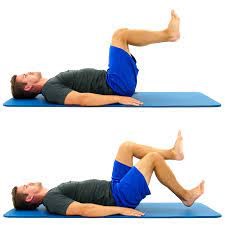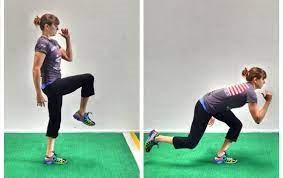Sports Psychology: Mental Preparation for Competition — Techniques for Improving Focus and Managing Performance Anxiety

In the world of sports, physical preparation is only half the battle. Athletes who consistently perform at their best understand that mental preparation is just as crucial. In competitive environments, the ability to focus and manage performance anxiety can be the key differentiator between winning and losing. This article delves into effective sports psychology techniques that athletes can use to enhance focus and control anxiety, leading to improved performance in competition.
Why Mental Preparation Matters in Sports
Sports psychology focuses on optimizing an athlete’s mental health and emotional well-being, which directly impacts performance. Elite athletes consistently practice mental strategies alongside physical training to ensure they are prepared for the pressure of competition. Whether it’s managing the pressure of a final game or maintaining concentration during high-stakes moments, mental preparation can significantly influence an athlete’s success.
Common Challenges in Sports Psychology
Athletes often face two major mental challenges during competitions:
- Performance Anxiety – The fear of failure or disappointing others can lead to nervousness, tense muscles, and mistakes on the field or court.
- Lack of Focus – Distractions, self-doubt, or external factors can lead to a loss of concentration, making it difficult for athletes to stay “in the zone.”
Sports Psychology Techniques for Improving Focus
Here are several mental techniques athletes can implement to improve focus and maintain peak performance:
- Visualization (Mental Imagery)
Visualization involves mentally rehearsing the actions and outcomes of a performance. By vividly imagining successful execution of skills, athletes can “train” their minds to react calmly and instinctively during competition. Studies have shown that visualization can help improve motor skills and confidence, making it a powerful tool for focus.
Tip: Before a game or event, spend 10-15 minutes visualizing various game scenarios, including successful plays, winning moments, and handling unexpected challenges.
- Mindfulness Meditation
Mindfulness meditation helps athletes stay present by focusing on the current moment, rather than worrying about the past or future. This technique enhances focus by teaching athletes to control their attention and avoid distractions. Mindfulness is especially effective for athletes in sports requiring sustained concentration, such as golf, tennis, or shooting.
Tip: Practice mindfulness for 5-10 minutes daily. Focus on breathing, bodily sensations, and your surroundings. If your mind wanders, gently bring it back to the present.
- Routine and Ritual
Establishing a pre-performance routine can help athletes signal to their minds that it’s time to focus. Whether it’s a specific warm-up, listening to a particular playlist, or practicing a certain movement, routines can help athletes block out distractions and get into the right mental state for peak performance.
Tip: Develop a consistent pre-game routine that includes both physical and mental preparation. Stick to it before every competition.
Managing Performance Anxiety in Sports
Performance anxiety can cripple an athlete’s confidence and ability to perform under pressure. The following techniques can help manage anxiety and keep nerves in check:
- Breathing Exercises
Deep, controlled breathing helps lower heart rates and reduce stress, bringing an athlete back to a calm, focused state. Breathing exercises are easy to practice, even during a competition, making them one of the most accessible tools for anxiety management.
Tip: Practice box breathing—inhale for 4 seconds, hold for 4 seconds, exhale for 4 seconds, and hold for another 4 seconds. Repeat until you feel more relaxed.
- Positive Self-Talk
The language athletes use to talk to themselves plays a major role in how they perform. Negative thoughts can amplify anxiety, whereas positive self-talk can boost confidence and reduce fear. Replace phrases like “I can’t” or “What if I fail?” with affirmations such as “I’ve got this” or “I am prepared and capable.”
Tip: Write down a few positive phrases or affirmations and read them aloud before competing. Repeat them in your head whenever you feel nervous or doubtful.
- Progressive Muscle Relaxation (PMR)
Progressive muscle relaxation involves tensing and then relaxing muscle groups in a systematic manner. This technique reduces physical tension that often accompanies anxiety and brings a sense of control over one’s body.
Tip: Practice PMR by tensing a muscle group (e.g., your shoulders) for 5-10 seconds, then slowly releasing the tension. Move through your body, focusing on each muscle group.
The Role of a Sports Psychologist
While self-practiced techniques can greatly improve focus and manage anxiety, working with a sports psychologist can provide a more personalized approach. Sports psychologists offer tailored mental training plans based on an athlete’s unique needs, and they help develop coping strategies for high-pressure situations.
Conclusion: Mental Training for Athletic Success
Just as athletes need to condition their bodies for peak performance, mental conditioning is essential to succeeding in sports. Visualization, mindfulness, and pre-game routines can sharpen focus, while breathing exercises, positive self-talk, and muscle relaxation techniques help manage performance anxiety. By integrating these mental techniques into regular training, athletes can optimize their mental game, leading to greater success on the field or court.
Key Takeaways:
- Focus on mental as well as physical training to maximize athletic performance.
- Use visualization and mindfulness to sharpen focus and stay present.
- Manage anxiety through controlled breathing, positive self-talk, and relaxation techniques.
By mastering the mental side of competition, athletes can gain the competitive edge they need to excel and thrive under pressure.
Written by: Stuart Schmidt, MS, ATC, CSCS Program Manager/Head Athletic Trainer for The Center Foundation in Bend, OR. Learn more about Stuart HERE.



 (2)
(2) (2)
(2) (2)
(2) 1
1  2
2 3
3 1
1 2
2 3
3 4
4  5
5  6
6 (1)
(1) (2) (2)
(2) (2) (3)
(3)















